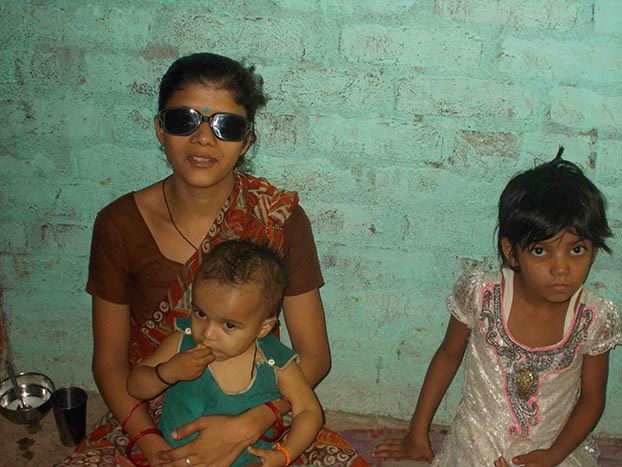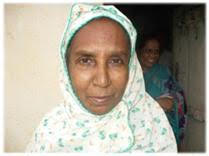My story:
My name is Sathvik Reddy Vudumula & I am 17 years old. I studied at the Delhi Public School, Secunderabad & am currently studying 12th grade at the Sri Chaitanya Jr College, DD Colony, Hyderabad.
Am doing this crowdfunding campaign to restore the vision of 50 underprivileged men & women who have lost their eyesight mainly due to cataracts.
While interning with an international NGO, I met a couple where the old lady was blind and their children had left them, as they became a burden than an asset. I realized that a mere 2000 INR could help her regain her eye sight & dramatically alter her life. That did not seem like a lot of money to me & I realized there were enough people who could help.
I am sure all of you reading this will be willing to help bring these people from darkness to light by funding just 2000 INR. Yes that is all it takes to fund ONE surgery.
These surgeries will be done in villages around Hyderabad.
I have already done a campaign on Fueladream that helped raise 2.29L INR & helped me undertake 100 surgeries for women. The success of this has reaffirmed my desire to help more of these poor people. It’s amazing how they feel when they get back something that they lost.
This time we are doing it for both men & women. In addition we want to go village by village and eliminate “ cataract led blindness” so that these villages can be termed “ blindness free “ villages. That is my ultimate goal and vision.
These surgeries are being done in partnership with Dr Santosh Moses who is the country head for Operation Eyesight (India) & has been extremely helpful in executing this initiative for me. Their aim is to eliminate “ avoidable blindness “ in India. All the surgeries are being done at their partner hospital – the St Gregorios Balagram (Its a NGO & hospital located at YACHARAM in Ranga Reddy district near Hyderabad). This NGO has the necessary permissions to give you an 80 G tax benefit (if you are a Indian funder) or receive money from abroad (FCRA certificate). Your receipts will be from St Gregorios Balagram.
Why is blindness so prevalent in the developing world?
There are many causes including poverty, and inadequate access to clean water and proper nutrition. In parts of the world where it's a struggle simply to survive, many people have neither a healthy living environment nor access to affordable medical care and a lack of education only worsens the problem. If living conditions threaten sight, it's often impossible to prevent or treat vision loss. Ultimately, the loss of sight can destroy a person's livelihood – or even life itself.
What is a cataract & who is doing this surgery?
It is the opacification (becoming cloudy) of the crystalline lens of the eye. The lens is a crystal clear structure whose clarity might be disturbed because of degenerative process. This might cause opacification of the lens fibers and this spreading of cloudiness in the lens is known as cataract.
The cloudiness of the lens scatters the light and stops it from focusing light on the retina, therefore causing clouding of vision, including loss of sight.
What is the cure?
Operation is the only cure for Cataract. Only when the hazy lens is replaced with an intraocular lens, the light rays can once again focus on the retina.
Operation Eyesight is at work in places where people are threatened by blindness and low vision. In many parts of India and sub-Saharan Africa, the conditions that lead to blindness are widespread and deeply rooted, leading to abject poverty or even death.
This campaign has tax benefits and accepts foreign funds.

What do we aim to achieve through this campaign?
The goal of the project is restoration of vision of 50 cataract affected, deprived men and women in villages around Hyderabad. The loss of sight can destroy a person's livelihood – or even life itself.
The surgeries will not only restore their vision but also help them go back to their daily lives. In most cases, these men or women are able to take up jobs and hence build a sustainable livelihood.
Success stories:
Arti is a 26-year-old woman who had a blissful life till 4 years back. Married to Shyam Sunder a farmer and mother of 2 lovely children, life was good. However, life took a dramatic turn for the worse when during a visit to her parent’s house she developed a minor eye infection.
The infection became worse in a couple of days and she was forced to visit a quack in her parents village as there was no other eye care service available. She purchased some eye drops and used them for over 3 months.
At the end of 3 months her vision started deteriorating. She did not know it at that time, but the prolonged usage of steroids had caused cataracts to develop in both her eyes. Her vision consistently diminished in the course of the next 3 years.

- The above image is of Arti with her kids after the surgery
When Annapurna, a Community Eye Health Worker with Operation Eyesight supported by Hospital Based Community Eye Health Project at Dr. J.L. Rohatgi Eye Hospital came across her during a door to door survey, she was completely blind in her both her eyes and dependent on her parents to take care of her and her children. Her husband had first sent her away to her parent's house, as he was unable to take care of a disabled lady along with two children and after a year, deserted her.
She was counselled by the Community Eye Health Worker and transported to the hospital for surgery. The surgery has been a life changing experience for her. At 26, with regained sight and the ability to take care of her children and her parents, life is looking up. Arti plans to find a job and become economically independent so that she can send her children to school. She also still hopes her husband will return to her now that she is no longer disabled.
Mrs. Md. Mahamudha is 60 years and lives in Chowderpally village, Yacharam Mandal, Ranga Reddy District in Telangana. She has two sons, both are married and live separately. Her husband passed away many years ago. Before her eyesight started diminishing, she used to work as a daily wage laborer in her village. But due to continuously decreasing vision she was not able to work. Her blindness also made her unable to do her household work as she lives alone.

- The above image is of Mrs. Md. Mahamudha after the surgery
Our community eye health worker identified her as cataract patient during a visit to village and brought her to the hospital for the treatment. Post surgery she is now able to see and has started performing her regular work and has rejoined her work as a laborer as well.

